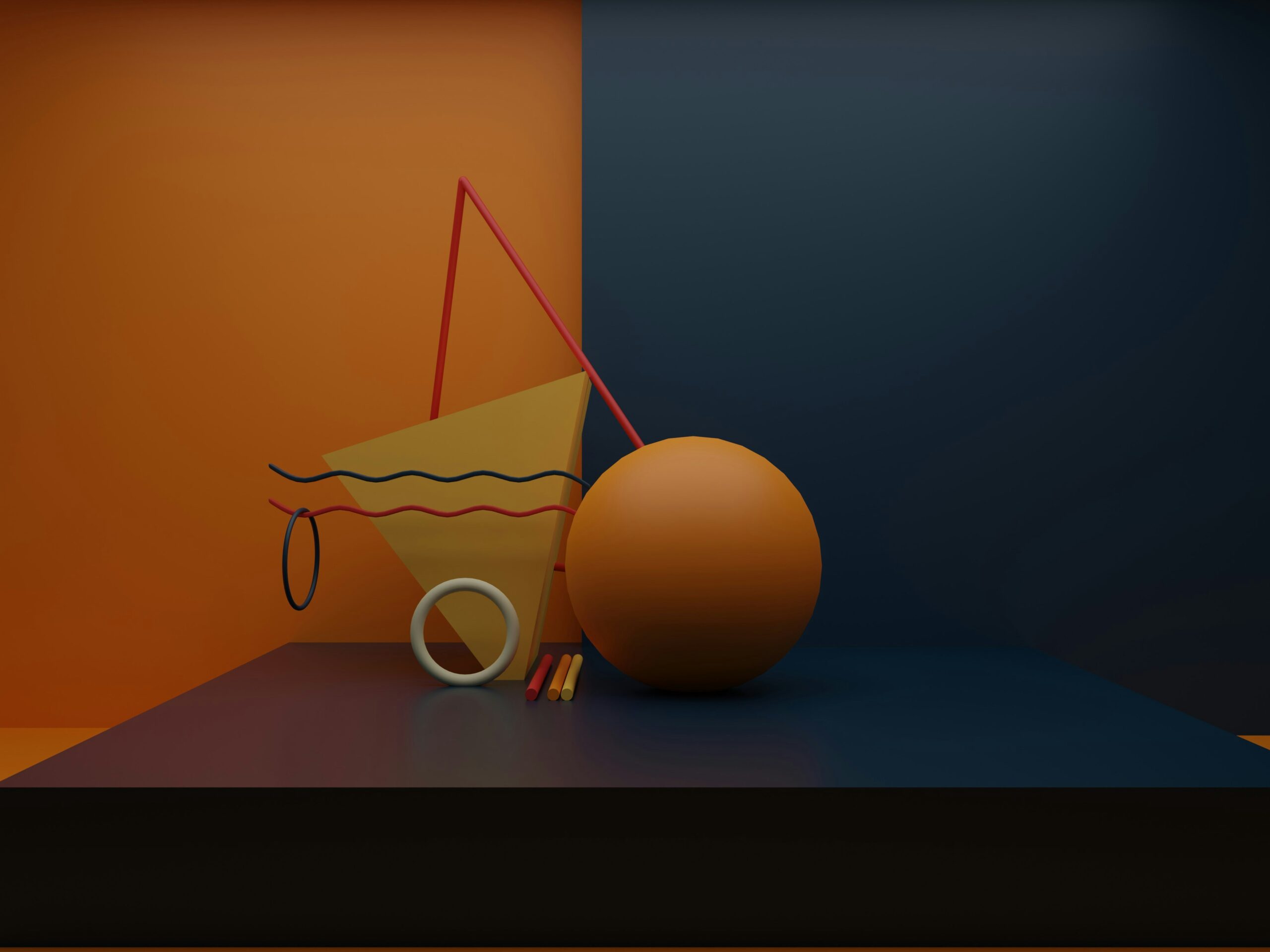Storytelling Through Design: The Art of Creating Visual Narratives That Say Design is more than just a composition of elements; it is a language, a medium that conveys stories without even saying a single word. In a visually-dominated world, storytelling through design is an essential requirement for a creator, marketer, and brand. After all, the ability to craft powerful narratives visually may well captivate attention, provoke emotion, and instigate action.
What Is Storytelling Through Design?

Photo by Ries Bosch on Unsplash
Storytelling through design is essentially the process of expressing a message, idea, or narrative using images, typography, color, and layout. Unlike written or spoken narratives, design uses subtle cues and symbolism to lead the viewer to interpret it in a certain way. It bridges the gap between information and emotion, transforming abstract concepts into tangible, relatable experiences.
Why Storytelling in Design Matters
Emotional Connection
Stories evoke emotions, and emotions drive decisions. A design that tells a story resonates on a personal level, creating lasting impressions. For instance, a charity’s campaign poster using poignant imagery can inspire empathy and donations much more effectively than plain text.
Engagement Increased
Visual stories captivate audiences, holding their attention longer than static, data-heavy presentations. They spark curiosity and invite exploration, encouraging viewers to dig deeper into the message.
Deeper Brand Connection
Brands that infuse storytelling into their design form stronger connections with their audience. It helps them communicate values, mission, and personality, creating loyalty and trust.
Key Elements of Visual Storytelling
1. Imagery

Images are the mainstay of visual storytelling. They set the tone, establish context, and evoke emotions. A well-chosen image can convey complex narratives in an instant. For example:
- Hero Images: Large, impactful visuals that open the story and attract attention immediately.
- Sequences: A flow of images that convey changes or transitions, creating rich meaning and context in a storyline.
- Mood and Emotion: Well-crafted images to elicit the feelings required, like happiness, a touch of nostalgia, or suspense; enhances the power of the storyline.
2. Color

Colors affect psyches, changing moods and perceptions. A selection of colors can strengthen a story. For example:
- Warm tones (red, orange, yellow): Creates energy, passion, and excitement.
- Cool tones (blue, green): Creates calmness, trust, and reliability.
- Contrasts: High contrast brings attention to focal points; harmonious palettes speak of unity and balance.
- Cultural Significance: Colors may mean different things to different people across cultures. Knowing this helps the design resonate with people in general.
3. Typography

Photo by Ashkan Forouzani on Unsplash
Typography is not just about readability but also a design element used to tell the story. How the font is chosen and arranged can be a part of the mood and even personality. Consider:
- Serif Fonts: Traditional, reliable, and authoritative
- Sans-Serif Fonts: Modern, Simple, and Clear
- Script Fonts: Elegance, creativity, and personalization
- Hierarchy: Using varying font sizes and weights for key parts of the storytelling, such as headlines and calls-to-action.
4. Composition and Layout

Photo by Shubham Dhage on Unsplash
The layout of elements leads the viewer’s eye through the composition. A balanced composition is clear, while intentional asymmetry creates dynamic tension. Key techniques include:
- The Rule of Thirds: Divide the frame into nine equal parts to position key elements in a strategic manner.
- Negative Space: Use empty space to draw attention to focal points and avoid clutter, thus creating a clean and impactful design.
- Focal Points: Intentional placement of important elements to direct the view and keep the attention
- Consistency: Maintaining a uniform design layout style throughout will support the message and avoid distractions.
Techniques for Effective Visual Storytelling
Visual storytelling has the power to change a simple design into a compelling narrative that communicates emotions, ideas, and messages. To create effective visual stories, designers have to apply a range of techniques that guide the viewer’s eye in UX Design too, provoke feelings, and reinforce the message. Here are some of the essential techniques for effective visual storytelling:
1. Start with a Strong Concept

Photo by Edho Pratama on Unsplash
A good visual story starts with a clear, strong concept. Before jumping into the design process, define what you want to communicate with your core message or idea. The concept will serve as the basis for every decision made, from color palettes to imagery, ensuring that the final product tells the right story. A defined concept not only guides the process but also gives it a sense of cohesion throughout the design, which is the essence of storytelling that makes it feel real and meaningful.
For example, a charity organization’s campaign could focus on a concept like “Hope in Despair,” which would dictate the use of uplifting visuals, symbolic imagery like sunrise, and typography that conveys warmth and optimism. A strong concept like this creates a cohesive thread throughout the design, making the message more impactful.
2. Use Metaphors and Symbols

Photo by Harpal Singh on Unsplash
Visual metaphors are great tools for storytelling as they condense abstract ideas into simple, familiar visuals. They allow the designer to speak in metaphor without actually speaking in it. Abstract ideas become tangible and accessible for the audience.
For instance, a lightbulb icon is often an epitome of creativity or ideas while an open road represents journey or opportunity. Including such metaphors in your design provides depth to the story. Therefore, it allows viewers to have a more personal experience of the content, as interpretation and reflection help this design resonate with people better.
3. Utilize Visual Hierarchy
One of the most effective techniques in visual storytelling is a clear visual hierarchy. This technique guides the viewer’s eye through the design, ensuring that they take in the most important information first. The visual hierarchy can be established through various design elements such as size, color, and placement.
For instance, headlines can be placed in bigger fonts while body text in smaller ones. It will attract the reader’s attention to the more important parts of the message before reading everything. Contrast color can also be used to attract focus on important elements in a design, and less significant information can be given softer, neutral colors. The aim is to create a visual flow that leads the viewer throughout the narrative in a logical yet engaging way, ensuring he does not miss any details that are critical to him.
4. Add Movement
The integration of movement into a design, whether it is through animation, transitions, or interactive elements, adds another layer of engagement and storytelling. Motion can be used to express ideas like progression, change, or action, and can create a more dynamic experience for the viewer. It can also be used to emphasize certain points in the narrative by drawing the viewer’s attention to key elements.
For instance, in web design, parallax scrolling creates the illusion of depth, making the story feel more immersive. Analogously, motion graphics can visually represent cause-and-effect relationships, such as showing a person overcoming obstacles or a product transforming from basic to advanced. Movement has the ability to capture and hold the audience’s attention, which makes the story more interesting and memorable.
5. Evoke Empathy
Human-centric stories are some of the most powerful narratives in design. If the viewer can connect with the story emotionally, then there is an increase in engagement and actions taken. In order to create empathy, designers need to tell stories that relate to relatable characters, emotions, and situations for the target audience.
For instance, a mental health campaign may depict the real and human vulnerability moments of loneliness, anxiety, or the want to be cared for. The images with genuine expressions, like close-up shots of someone’s face, can build a more emotional connection and lead to reflection on how things have been.
6. Use Color to Set the Tone
Color is one of the most effective tools for establishing the emotional tone of a visual story. Colors have psychological effects, which can induce specific moods and feelings. A designer can strategically use these effects to enhance his narrative.
For example, warm colors like red, orange, and yellow can indicate energy, passion, and excitement. Therefore, such colors are perfect for action or urgency-based campaigns. On the contrary, cool colors such as blue and green are soothing and induce trustworthiness and reliability, best suited for brands that are looking to focus on stability or health. Designers should be aware of the cultural implication of colors, as color perception varies differently in other cultures. This awareness prevents the design from being offensive in some regions and allows it to reach out universally.
7. Leverage the Potential of Typography
Typography is a significant part of visual storytelling because it not only affects the legibility of the message but also contributes to the mood and personality of the design. The size, spacing, and arrangement of fonts can all communicate different aspects of the story.
For example, serif fonts give an impression of tradition, authority, and reliability, making them suitable for formal or historical narratives. Sans-serif fonts are modern, clean, and simple, which are quite perfect for minimalist or contemporary designs. Script fonts can also imply elegance and personal connection, best for creative or luxury brands. It’s through careful selection and arrangement that designers amplify the narrative and reinforce the emotions they would like to convey.
8. Concentrate on Consistency
Consistency in design ensures that the overall visual elements work for the telling of a unified message. Consistency in typesetting, color schemes, and layout style not only strengthens the narrative but also builds up the brand identity and helps create trust. For example, if a design carries a specific color palette or a specific font style throughout, the same is implemented across all materials, like a website, ad campaign, or social media post. The audience will come to recognize the message is part of the same story.
Consistency also contributes to clarity in the design. If the design is cluttered and inconsistent, it will most likely divert attention from the message, confuse the reader, and make the story less impactful. Therefore, visual harmony is necessary for an effective visual narrative.
Conclusion
Mastering visual storytelling involves using a combination of techniques that engage the audience, evoke emotions, and communicate ideas effectively. By starting with a strong concept, using metaphors, creating a clear visual hierarchy, and incorporating movement, designers can create compelling narratives that resonate with their audience. Moreover, using color, typography, and consistency strategically enhances the overall story, making the message memorable and impactful. Ultimately, these techniques empower designers to transform abstract ideas into tangible, emotionally-charged stories that leave a lasting impression.
Applications of Storytelling in Design
1. Branding
A brand’s visual identity tells its story. From logos to color schemes and even packaging, these are avenues for communication of values and aspirations. For example, Apple’s minimalist design reflects innovation and elegance.
2. Marketing Campaigns
Effective campaigns often employ the use of storytelling. One example is Nike’s “Just Do It” campaign, where compelling visuals about athletes overcoming challenges inspire and motivate people.
3. Website Design
Websites are interactive stories. Landing pages, scroll effects, and other interactive elements drive the visitor through a brand’s narrative. Parallax scrolling can be used to create an impression of depth and forward movement, for example.
4. Social Media Content
Social media platforms rely on bite-sized stories. Carousels, videos, and posts that all form a single, consistent narrative can really make it go viral. Visual stories thrive on platforms like Instagram and TikTok.
Storytelling through Design Challenges
1. Complexity vs. Detail
So much detail can be overwhelming while too little may not reveal the story. The appropriate balance is crucial.
2. Cultural Sensitivity
Designs must take cognizance of cultural considerations and avoid symbols or coloration that may be easily misinterpreted or offensive to a particular culture.
3. Authenticity
Audiences can always tell when a story does not ring true. Authentic designs should resonate with the brand voice and values.
Case Studies in Visual Storytelling
1. Airbnb’s Inclusive Design
Airbnb’s website and app use images of real hosts and homes to tell stories of belonging. The design elements are warm and authentic, reinforcing their tagline, “Belong Anywhere.”
2. National Geographic’s Instagram
National Geographic’s Instagram feed is a masterclass in visual storytelling. Stunning photography, paired with compelling captions, takes viewers on a journey around the globe.
Best Practices for Storytelling in Design
- Know your audience. The needs of your intended audience would always serve as your guide.
- Be authentic. Only true stories appeal; nothing beats genuine storytelling compared with fiction.
- Iterate and test. Try out a piece, gain feedback from audiences, and perfect designs.
- Be consistent. Visual elements must flow into the broader brand.
As technology advances, new tools and platforms are enhancing visual storytelling. Augmented reality (AR), virtual reality (VR), and artificial intelligence (AI) are opening up immersive possibilities. Designers must adapt to these innovations while staying true to the timeless principles of storytelling.
Conclusion
Storytelling with design is one of the most potent means of communication to connect and inspire. Using visual narratives is an effective art by which designers will create significant, memorable, and voiceless expressions that say thousands of words. Whether designing a brand, building a campaign, or creating a digital interface, storytelling makes the difference in leaving that memorable impact.











